The secret to rendering white products on white backgrounds - Yanko Design
I unremarkably never recommend rendering any sort of product on a white background unless information technology's truly necessary. When rendering, the background plays an important role along with the foreground, helping complement/residual information technology, or create a heavy dissimilarity (that's normally the photographer or designer'southward call), but a white background tin generally feel slightly template-ish. The existent problem, all the same, is rendering white on white. A white production on a white background can ordinarily be a nightmare because they tend to merge into one and another, creating ambiguity, and often end up concealing details of the product rather than revealing them… so how exactly does one render white on white? There are a few tricks you could master.
The offset trick is realizing that your product, background, and lighting are NEVER the aforementioned colour. When yous load a model into a rendering software, chances are, you lot'll utilize pure white on your product, while the background and lights past default are prepare at white besides. This similarity begins causing your product and background to exist practically indistinguishable. The fix? No production is perfectly white, and conversely, no backgrounds are perfectly white either. Choose a shade that's 98% white (on the black to white spectrum) and your product immediately stands out against the groundwork, while looking more realistically white, rather than perfectly white. Yous may also desire to add a hint of blue to enhance its perceived whiteness, or mayhap go in the other direction and drop in a tiny flake of yellow to make it look on the warmer side. Consider using a warmer or cooler shade of white every bit your groundwork too to create a contrast that your eye will hands pick upwardly on because of the difference in color. You could exploit Keyshot's color options, fifty-fifty using their extensive Pantone color set.
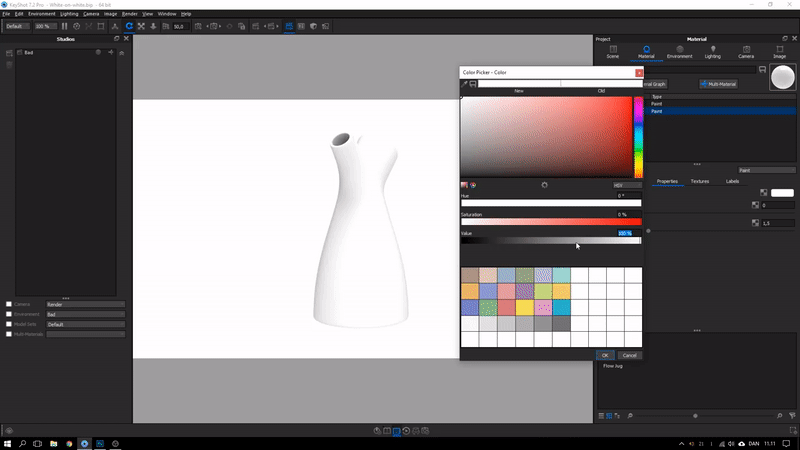
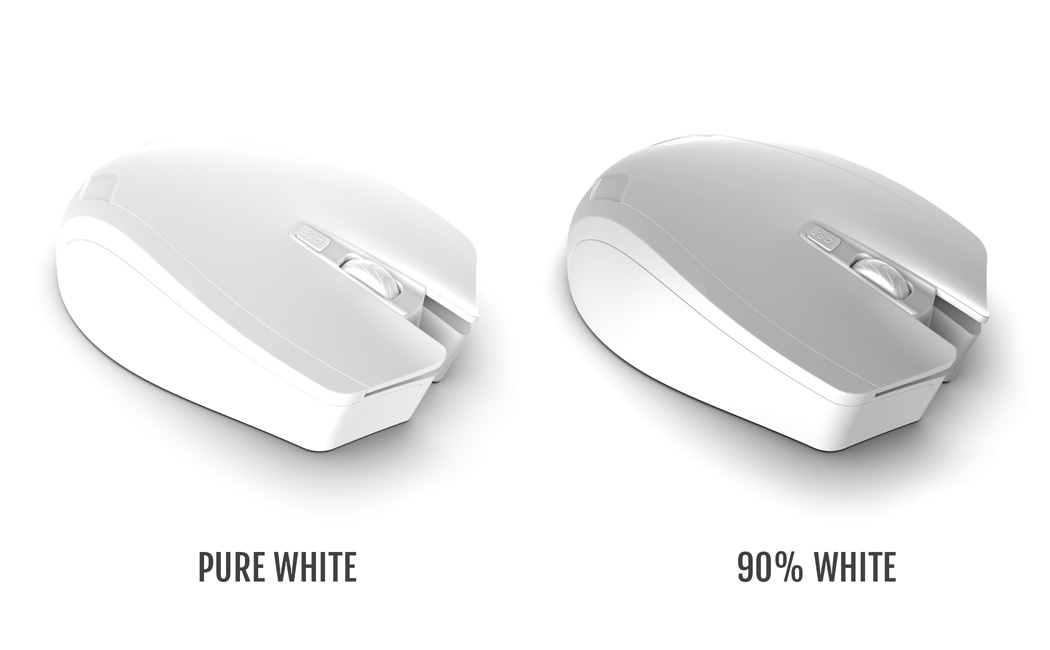
Trick ane relied on choosing your product and background colors. Trick two requires a fair corporeality of expertise, just if washed correct, can brand renders look stunning, regardless of how plain your product is. In fact, it'south something Apple has mastered over the years. With products that usually institute direct lines and geometric curves, Apple tree relies heavily on perfect lighting to make their products pop. Have for instance the Apple Airpods that are placed against a white background. The idea is to have lights that illuminate the correct places, and cast shadows on the right places. Never have a light shining on the side of a product, because a highlight on the side makes your production's border disappear into a white background. Ever aim for a shadow around the border, giving your production a gray outline, which helps a viewer easily choice up on the product's shape. If all fails, add a light in a way that casts a shadow on the floor effectually the border of a production, making it more visible. Keyshot has tonnes of environment options that aid accentuate product details (consider experimenting with an surround that has a dark-ish background rather than settling for the default environment setting). With time, you can build your ain environments to add together a signature touch to your renders, placing lights exactly where you lot need them, creating accurate highlights on your products. This, in plough, will also aid you castor upwardly on your studio lighting skills, when yous're dabbling in photography. Another pro-tip? A glossy stop on your production makes highlights and shadows more pronounced. If your product is matte, the crisp lighting details oft turn fuzzy. Want to return a matte-end white product? Make sure your environment has a good balance between light and nighttime elements, and so that they show up well on your matte product.
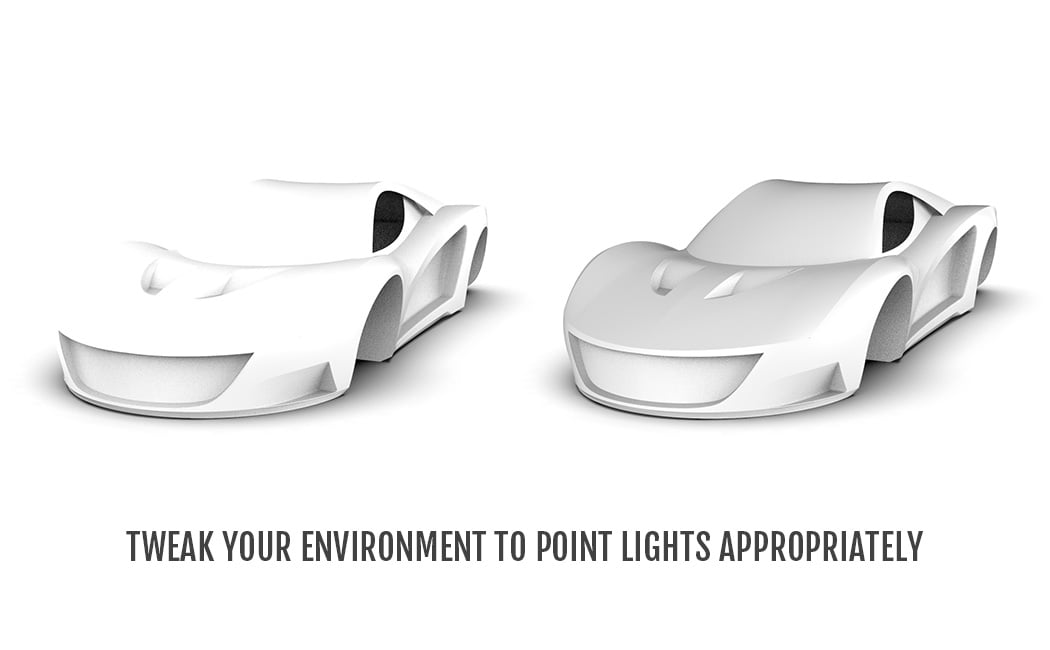
Non actually getting the exact highlight you want on your rendering software? No trouble! Trick number 2.v… simply build the highlights in photoshop. Take your render to a photo editing software, and add your highlights using a castor. This gives yous MUCH more control over your render, and if it'southward whatsoever consolation, touching up renders and adding artificial highlights is something ALL companies do to make their renders wait more flashy.

The last trick… just manually increase or decrease the contrast on your pictures. If your production has black details that are getting lost when you tinker with the contrast, endeavor meddling with the Curves tool (ctrl + M or command + M) in photoshop to increase the intensity of just the grays. That manner, you're not touching the whites or the blacks. Y'all're merely taking the 'almost white' parts of the prototype and making them more than gray. To finish off, try calculation a vignette to the image, giving it a bit of a singled-out border, and helping information technology create a spotlight on your product.
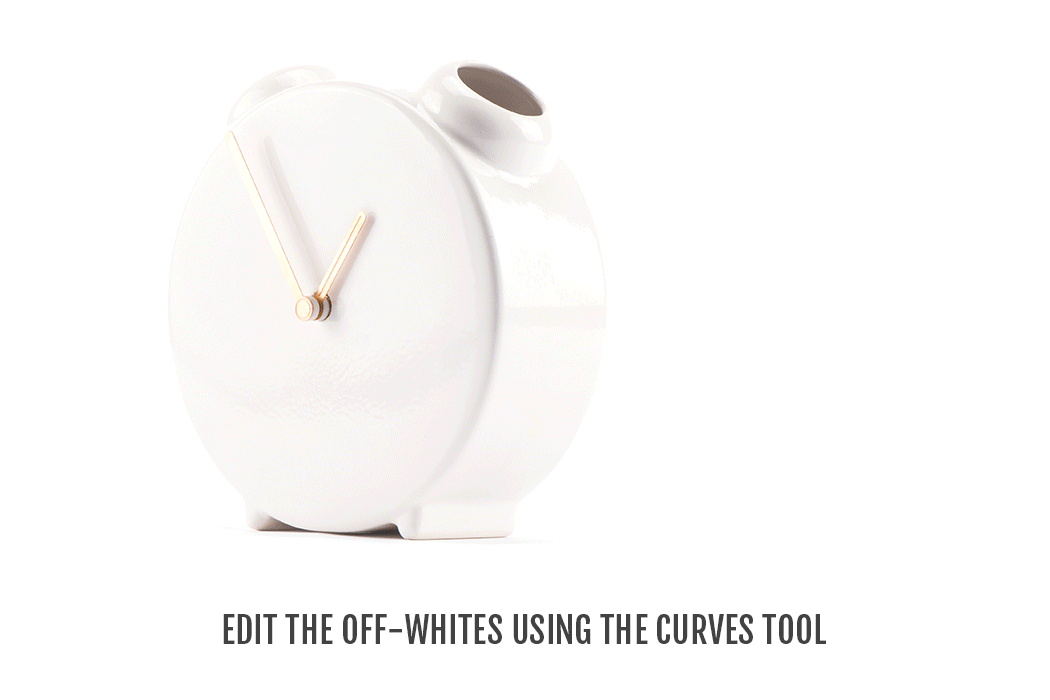
Rendering white on white is quite a challenge, but the trick is existence able to have either a mental or visual reference. If you lot know exactly what you want, where you lot want highlights, where you want shadows, it makes execution easier. As far every bit personal communication goes, stay away from templates and try to build materials and environments from scratch. It makes rendering a much more easily-on activity, and more than so, helps You lot stay truthful to YOUR vision, rather than getting lucky by dragging and dropping colors, textures, materials, and environments. And nigh importantly, when rendering white on white or rendering anything in general… stop thinking similar a production designer, and beginning thinking similar a photographer. Your renders will look absolutely stunning!
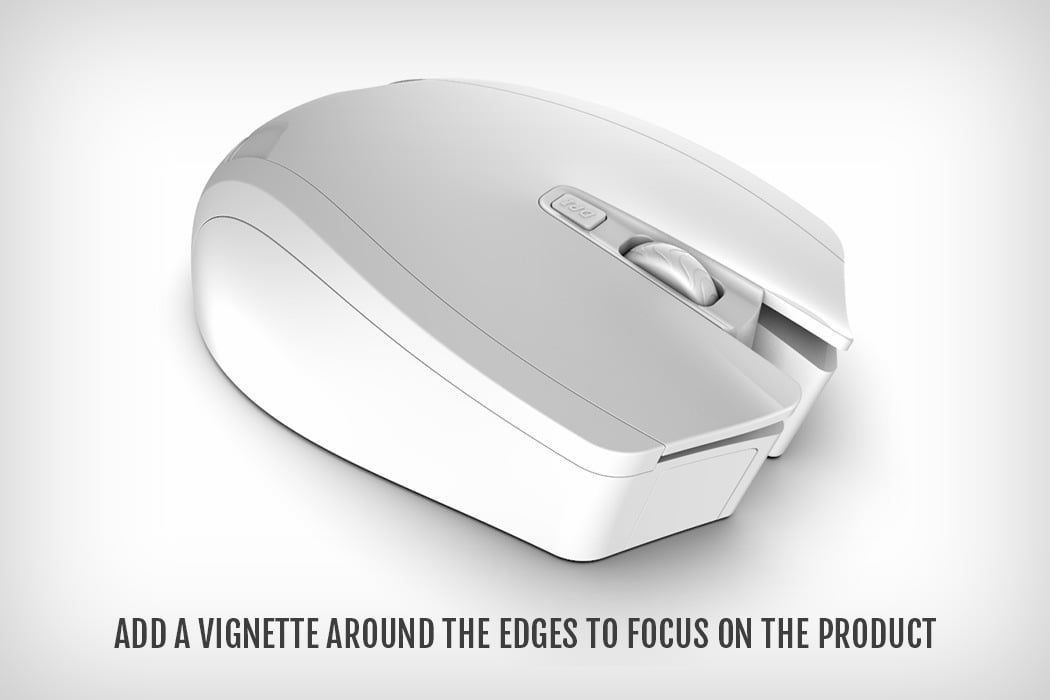
Video Credits: Luxion Keyshot
Mouse 3D Model: Luxion Keyshot
Car 3D Model: Taufiqul Islam
Airpods Image: Apple
Clock Vase Image: Jaro Kose
Source: https://www.yankodesign.com/2018/08/07/the-secret-to-rendering-white-products-on-white-backgrounds/
0 Response to "The secret to rendering white products on white backgrounds - Yanko Design"
Post a Comment